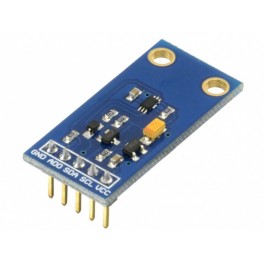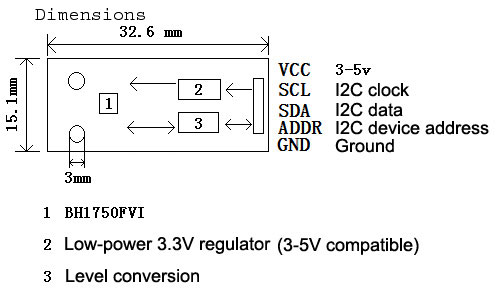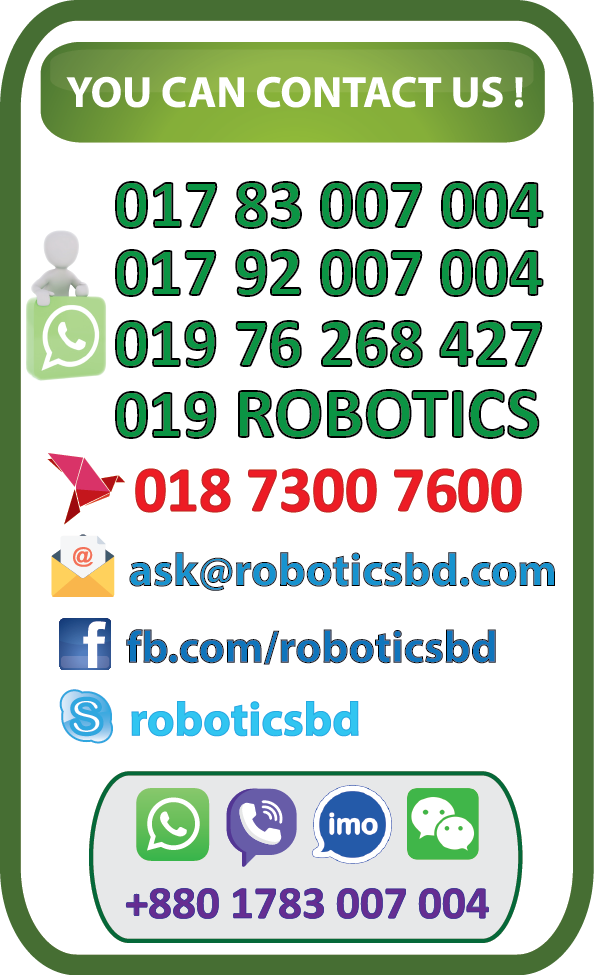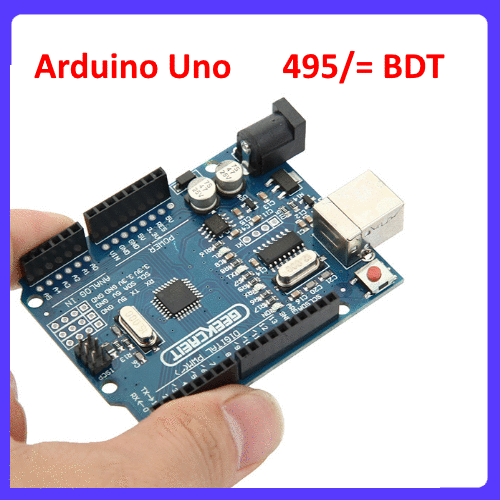 Maximize
Maximize BH1750FVI Digital Light intensity Sensor
- Chip: BH1750FVI
- Power Supply: 3.3V - 5V
- Light Range:0 - 65535 lx(Lux)
- Sensor Built-in: 16 bit AD converter
- Size(L x W): Approx. 3.2cm x 1.5cm
- Direct digital output, bypassing the complex calculation, bypassing the calibration
- Close to the spectral characteristics of visual
- Widely used to 1-lux high precision measurement
- Standard NXP IIC communication
- BH1750FVI Datasheet
By buying this product you can collect up to 55 loyalty points. Your cart will total 55 points that can be converted into a voucher of BDT 11.







































